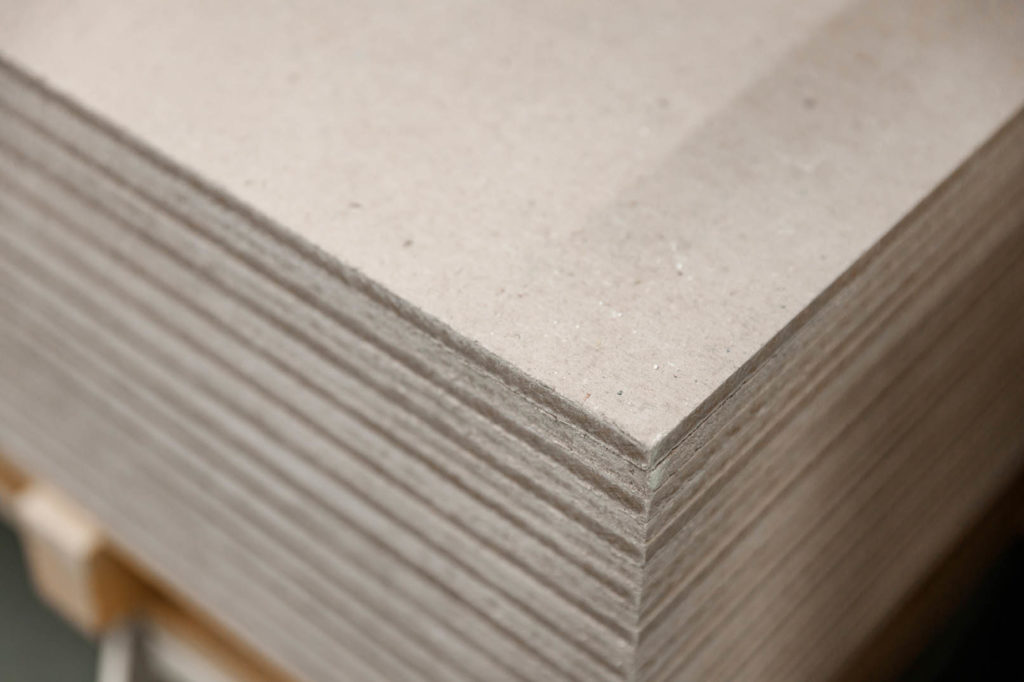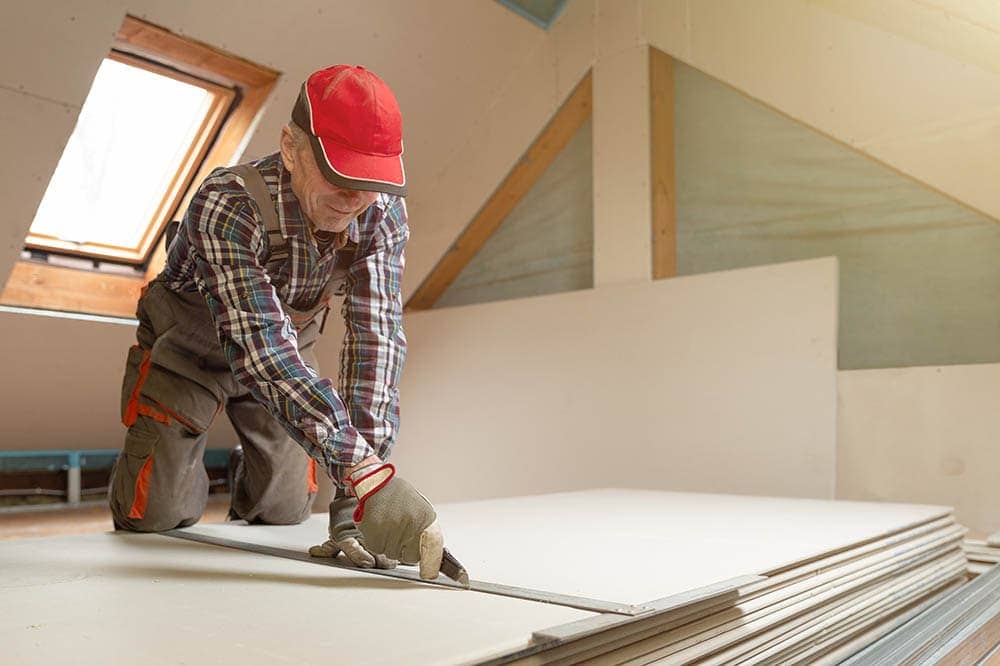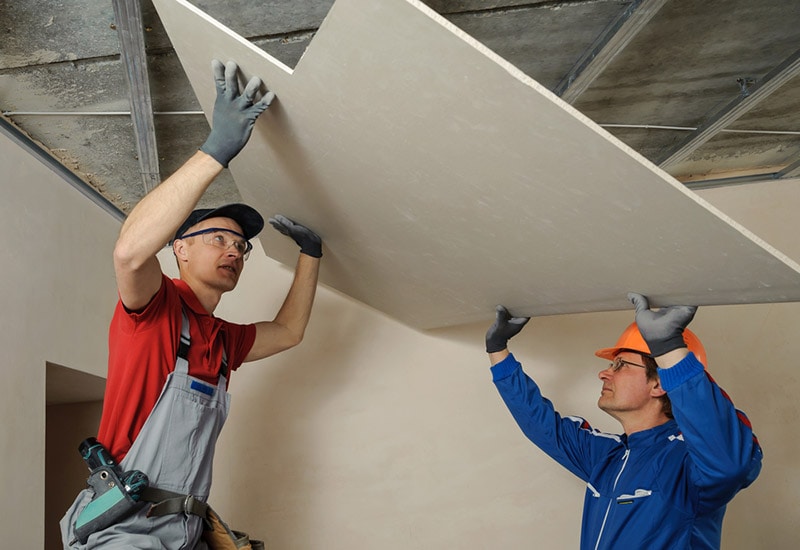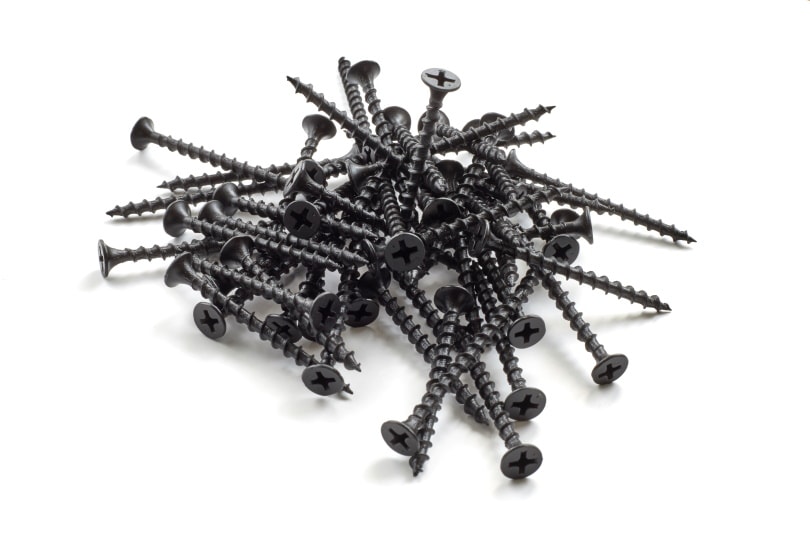How Many Screws Do I Need Per Sheet of Drywall? Facts & FAQ
-
Pete Ortiz
- Last updated:

Drywall is a go-to material in construction. Mostly used for building walls and ceilings, it’s fairly cheap, easy to work with, and has a decent lifespan. And the best way to fasten drywall is to use screws. So, how many screws will you need to properly secure a sheet of drywall? This greatly depends on the size. A standard 4-feet by 8-feet sheet requires 32 screws.
But how do you know exactly how many fasteners you’ll need for the job? Is there a formula for figuring this out? What’s the best screw type for drywall sheets? And, finally, what’s the right screw distance/gap for not damaging the wall? Read on, and you’ll find detailed answers to every single question!
What is Drywall? Properties and Characteristics
Commonly known as wallboard, plasterboard, and a gypsum panel, it’s one of the most commonly used materials in construction. There are many different types of drywall panels out there, with different combinations of additives, fiber, pulp, and, of course, calcium sulfate/gypsum—the main “ingredient”. Depending on the compound, it can be resistant to humidity, mold, and fire.
While drywall is mostly used for walls/ceilings, it’s also a perfect choice for arches, eaves, and other architectural treats. Drywall is very easy to work with and takes little effort to install and fix. Cutting it doesn’t require years of experience, either. That’s exactly why it’s dominating the market right now.

- Regular (cheap and accessible, the most popular type)
- Fire-rated: (high resistance to fire, doesn’t burn easily)
- Moisture-resistant (doesn’t rot or decay, perfect for bathrooms and basements)
- Impact-resistant (handles high levels of abuse, primarily used in schools)
- Soundboards (designed to absorb sound frequencies for dampening)
- Blue boards (specifically manufactured for veneer plaster)
- Lead-lined (includes a layer of lead that protects against radiation)
- Flexible (the most versatile and adaptive drywall)
The Average Size of a Drywall Sheet
The most popular drywall sheets in the US are 4 feet by 8 feet. This is the golden standard that most manufacturers follow. It’s (relatively) lightweight, easy to carry around, and covers enough ground on walls and ceilings to be effective and efficient. More importantly, it’s sturdy enough to handle dozens of screws without splitting or falling apart.
If you ordered drywall sheets from a local hardware store/manufacturer, most likely, they’d be 4 feet by 8 feet. With that said, there are lots of variations out there, specifically designed for different projects. Always check the size, thickness, and type of drywall before paying for it to avoid any confusion.

So, What’s the Right Number of Screws?
The rule “the more, the merrier” doesn’t apply here. Even the toughest drywall won’t be able to withstand hundreds of screws piercing through it. In contrast, if you fail at using a sufficient number of screws, the sheets won’t be firmly secured, which is also bad news. So, for a 4 by 8 drywall sheet, the recommended number of screws is 32. Some experts suggest using 40 or even 48 screws; others claim 28 is more than enough.
That makes 32 a safe place to start. In any case, spread the screws evenly across the surface. Don’t use more than 6 on each side. As for the studs in the middle, 5 per each will be just right for a strong rip. The math is very simple: 6 x 2 + 5 x 4 = 32. This is a tried-and-true pattern that yields good results. Still, you should check with your city’s local codes before doing any drilling.
Making your Own Calculations
But wait—what if you’re working with drywall sheets that aren’t 4 by 8? What if they’re much smaller or bigger? Don’t worry; there’s a great formula that helps pick the perfect number of screws for any drywall sheet size. Just use one screw per square foot of drywall, and that’s it! So, while 4 by 8 equals 32 square feet, 4 by 4 will be 16 square feet—you get the idea.
This is important: when dealing with extra-large or extra-small sheets, instead of measuring every single piece of drywall, calculate the size of the wall. Then, once you’ve got the accurate square footage of that wall(s), use the same formula and only buy one screw to cover each square foot. And to know how many full 4 by 8 sheets you’ll need for this job, divide the square footage of the wall by 32.
And when you’re ready to buy those drywall sheets, always add 10%–15%. This is done to cover cuts, uneven shapes, and non-regular wall/ceiling sizes. The vast majority of houses in the US feature 16-inch spaced studs on the walls. But sometimes, the gap between the studs is 24 inches. In that case, you’ll need 15 screws to secure a 4 by 8 sheet. A 4 by 12 sheet, in turn, will require 21 screws.
Spacing: Keeping a Safe Distance
What about spacing, though: what’s the right distance between the screws? There are no 100% right or wrong answers here, as pretty much every single drywall brand has its own recommendations. The same goes for experienced construction workers and, again, building codes. However, if you’re using screws on the edge, make sure they’re at least 0.5 inches away from it so as not to crumble the sheet.
As for the gap between the screws, on the edge, see that there’s an 8-inch distance. Double that when driving the screws into the field (the main part of the sheet). These are the instructions for the walls. For the ceiling, you can put the screws a bit closer to each other: 7–8 inches for the edge and 12 inches for the field. Why is the distance shorter here?
That’s because horizontally secured drywall puts less stress on the sheets and the screws. Oh, and when working on a ceiling, drive the screws into the joists, not the studs.
Does Glue Reduce the Required Number of Screws?
Adhesives are commonly used to strengthen the bond between drywall sheets and framing members. So, does that mean you can use fewer screws when a gluing product is involved? The answer is yes, the number of screws can (and should) be reduced. Adhesives don’t just serve as extra means of support: they do a great job of replacing fasteners while offering the same level of security.
On average, contractors and DIY enthusiasts use 50% fewer screws when the glue is involved. In some cases, the number can be dropped by up to 75%! You should still use the formula that we discussed earlier, of course, just remember to double the distance between screws on the sheets.

Does the Screw Type Matter?
Yes, it does very much matter what type of screws you use on drywall. To avoid any confusion, always use drywall screws for drywall. As the name suggests, they’re specifically designed to work with this material. First, they’re “gentle” enough not to damage the sheets. Second, they have a tighter hold on drywall compared to, let’s say, wood screws and don’t strip out.
The big question is this: Can you use lag, wood, structural, or metal screws on drywall? Technically, you could, of course, try, but we strongly recommend against that. Drywall screws aren’t at all expensive or hard to work with. Made of steel (in contrast to many screw types), they last for a really long time.
- Coarse drywall screws (great for boards and studs)
- Sell-drilling screws (recommended for metal frames/studs)
- Fine drywall screws (also work with metal studs but come with tiny heads)
- Trim-head screws (for securing wood to drywall)

What About Screw Size?
The thicker the drywall sheets/panels, the bigger the screws should be. For example, 1–1/4-inch screws are perfect for 1/2-inch drywall. But, if your sheets are thicker (5/8-inch), only use 1–3/8 or even 1–5/8 screws. They’ll cost a bit more but will be more reliable.
Are There Any Alternatives? Will Nails Work?
Not a big fan of screws? Then why not try and use nails instead? Drywall nails (cupper-head or cement-coated) are cheaper and will work for small-scale projects. However, they’re not as strong, which is why drywall nails are rarely used on ceilings or heavy-duty projects. Besides, you’ll need more nails to secure a drywall panel than screws.
Conclusion
Drywall has been around since the late 19th century and became incredibly popular in the 1950s. This is one of the best construction materials out there and is praised both by contractors and DIY enthusiasts. And how do you secure it? Using screws, of course! Today, we learned how to pick the right number of screws for a sheet of drywall depending on its size.
Next, we discussed spacing, the use of adhesives, and the best screw types for the job to avoid warping, cracks, and screw pops. So, if you just bought a bunch of drywall sheets and want to put them to good use, our detailed guide will help you secure them properly with the right number of screws!
- Britannica – Drywall, Building Material
- HowStuffWorks – How Drywall Works
- Steeler – Drywall Construction Material Estimator
- Best Drywall Screws and Nails for Your Projects
- How Many Screws per Sheet of Drywall?
- Com – Types of Drywall
- Ultimate Guide to Drywall Screws
- JLC – Trick for Gluing Drywall
- Wikipedia – Drywall
Featured Image Credit: Kirill Gorshkov, Shutterstock
Contents



